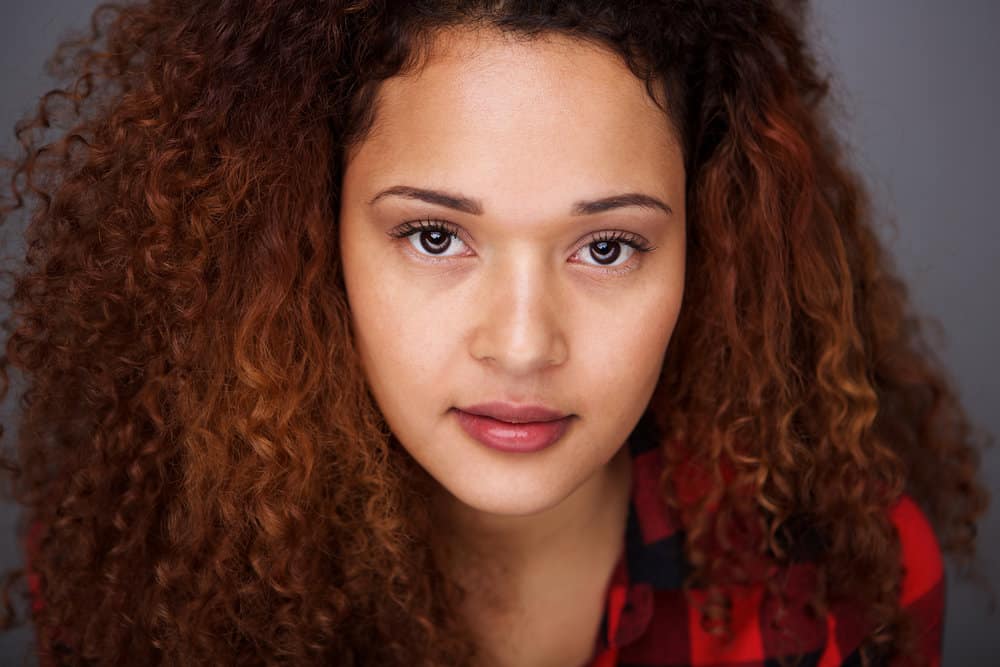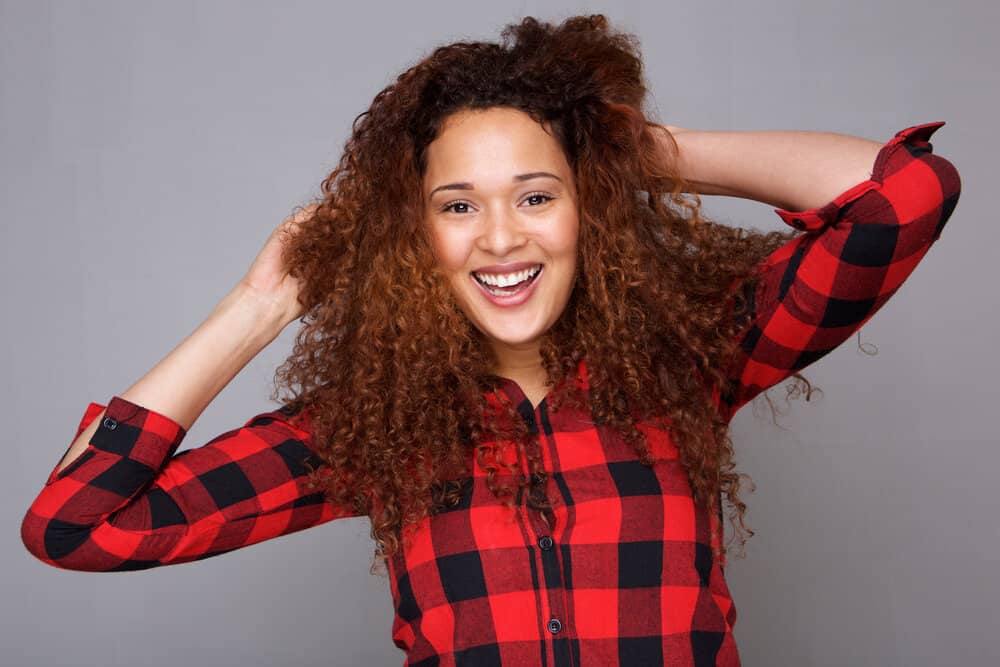
Dyeing hair comes with many rules and restrictions. The process can be confusing, especially if you’ve just discovered dyes.
One topic that has many hair dye newbies bewildered is whether semi-permanent hair dye can be mixed with permanent hair dye. Can you mix semi-permanent hair dye with permanent color?
We're here to clear things up once and for all. By the end of this article, you'll learn everything you need to know about mixing semi-permanent and permanent hair dye.
Table of Contents
Can You Mix Semi-Permanent Hair Dye with Permanent?
Mixing semi-permanent and permanent dyes is not recommended. If you've ever looked at the ingredient list on permanent and semi-permanent dyes, you probably noticed that they're pretty different.
Permanent dyes contain ammonia and other harsh chemicals that open up the hair shaft to allow the color to penetrate its cortex. This is what gives permanent hair dyes their longevity.
On the other hand, semi-permanent dyes don't contain many of these chemicals. Instead, they rely on direct dyes, which sit on the hair shaft and don't penetrate.
When you mix chemicals that shouldn't be mixed, there's always a risk they could react in a way that you don't expect.

Several things can happen if you mix permanent and semi-permanent dyes:
- The color may not take to your hair in some areas.
- The color may be unpredictable and could turn out patchy.
- Your hair could be left dry and damaged.
- Your hair color result won't last as long as it would have otherwise.
The last thing you want is your hair covered in patches of weird colors. It's just not worth the risk.

Does Semi-Permanent Dye Need to Be Mixed?
Semi-permanent hair dye does not need to be mixed with any other type of dye to achieve your desired color. You can simply select the color you want from the get-go.
Semi-permanent dye comes in a variety of colors, so you should be able to find one that matches your desired shade without too much effort.
But if you're looking for something a little more adventurous, you can also mix different colors to create a new hue. And when you do, you'll need to reference color theory to ensure you mix the right colors to produce the precise shade you’re going for.
When mixing two different semi-permanent dye shades, ensure that they’re from the same brand. If they aren’t, you could end up with a wonky shade.
If you're not sure which brands are compatible, it's best to do a little research online before you start mixing. The manufacturer will state if a dye is mixable with other shades in the same line.
Semi-permanent dye generally lasts between four and six weeks.
So it's a great option if you're looking for a temporary change or if you want to lighten your hair color gradually. If you're looking for something that will last a little longer, consider using a permanent dye.
Important: Always do a strand test first to ensure the color looks good on your hair.

Can You Mix Semi-Permanent Dye and Developer?
You should not mix semi-permanent dye with developer. A developer is a type of hydrogen peroxide used with permanent hair dye. When mixed, they create a chemical reaction that helps the color to penetrate the hair shaft.
This reaction won't occur when you mix semi-permanent dye with a developer.
Not only will mixing these two products not produce the desired effect, but it can also damage your hair. The chemicals in developer can cause your hair to become dry, brittle, and more susceptible to breakage.
So, it's best to avoid mixing semi-permanent dye with developer altogether.

Should You Mix Permanent Dye?
Permanent dye does require mixing. For those who aren't aware, hair dye requires two components: the color base and the developer. The color base is, well, the color.
The developer helps to open up the hair cuticle so that the color can penetrate it and facilitate the dyeing process. The developer is usually sold in a bottle separate from the hair color.
This is because developers come in different strengths, typically mixed in different ratios depending on the desired color. The most common developer strengths are 10 volume, 20 volume, 30 volume, and 40 volume.
Most at-home dye kits come with a 20-volume developer.
You'll need to mix these two components (dye and developer) according to the instructions on the box before applying them to your hair.
Note: You can also mix two shades of permanent hair dye if they are mixable. Just like with semi-permanent dyes, you'll want to ensure that the shades are from the same brand. This will help to ensure that the colors mix well and that the resulting shade is accurate.

How to Mix Dyes Together to Create a New Color
Now that you know more about the logic behind mixing dyes, let's discuss how to mix different colors. As we mentioned earlier, you'll need a basic understanding of color theory to do this successfully.
Basic Color Theory
The color wheel is a helpful tool for mixing hair dyes, as it can help you determine which colors will work well together and which will clash.

There are three basic categories of color:
- Primary colors (red, yellow, blue) - Primary colors cannot be created by mixing other colors. All other colors are created by mixing primary colors.
- Secondary colors (orange, green, purple) - Secondary colors are created by mixing two primary colors. For example, orange is created by combining red and yellow together.
- Tertiary colors (blue-green, yellow-green, red-orange, red-purple, blue-purple, and yellow-orange.) - Tertiary colors are created by mixing a primary color with a secondary color. For example, red-orange is created by combining red and orange.

Here are some tips to follow when mixing dyes:
- To create a shade lighter than either of the two colors you're mixing, add a lighter color to the mixture.
- To create a shade darker than either of the two colors you're mixing, add a darker color to the mixture.
- To make a color less intense (pastel), mix it with white.
- To make the color more intense, mix it with black.
It's often best to start with smaller amounts of each color and add more as needed. This will reduce your chances of ending up with a color that's too dark or too light.

Dos and Don'ts of Mixing Two Different Hair Dye Shades
Armed with a better understanding of how hair dyes work and how to mix them, you’re in a good spot. Here, we’ll go over some dos and don'ts to keep in mind as you mix up your shades:
- Do apply the dye to a test strand before dyeing your entire head of hair.
- Do mix colors from the same brand for the best results.
- Do use a 1:1 ratio of dye to developer (unless you're trying to achieve a lighter shade, in which case you'll want to use more developer than dye).
- Do use a tinting brush to mix the dye.
- Don't mix a semi-permanent color with a permanent color. This could result in uneven color and can damage your hair.
- Don't mix shades that are too far apart on the color wheel. This will likely result in a muddy-looking color.
- How Long Does Temporary Hair Dye Last
- Ion Permanent Hair Color Instructions
- Semi Permanent Hair Color After Bleaching
- Can You Add Developer to Semi Permanent Hair Color?
So, there you have it - everything you need to know about mixing semi-permanent and permanent hair dyes. Just follow the tips and guidelines outlined above, and you’re sure to come up with some fun new shades. We wish you the best of luck as you experiment with hair dye!




